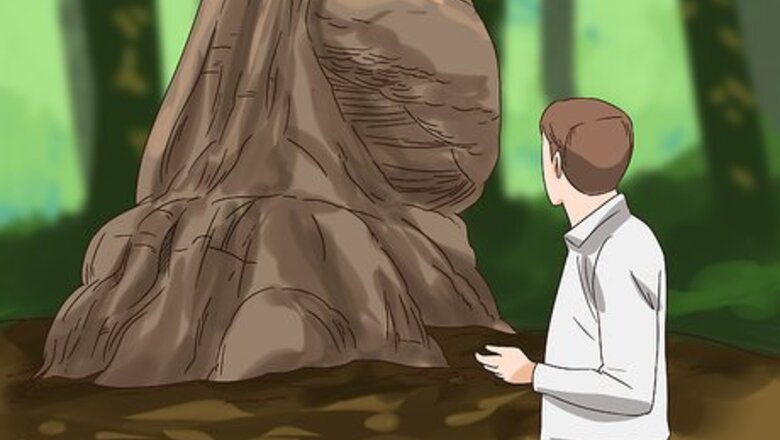
views
Locating Burls in the Forest
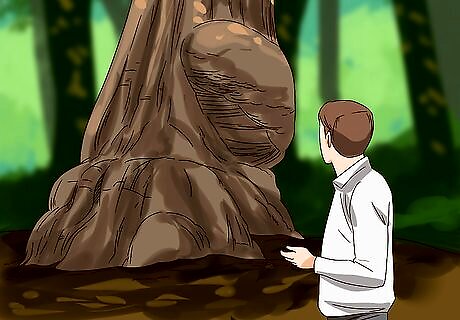
Look around damp areas in dense forests. Fungal diseases are a major cause of tree burls, and tree fungi thrive in dark, damp conditions. So, especially if you’re hoping to find lots of burls in a single location, check first under heavily canopied areas near a water source. It’s possible to find burls anywhere there are trees, however, since they can also be caused by things like broken limbs. Burls are essentially the “scabs” or “scars” of a tree.
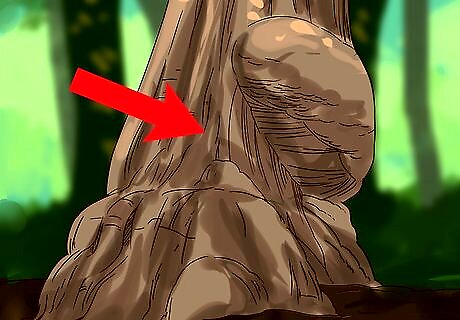
Scan the base of the trunk and any damaged areas. In some tree species, like redwoods, burls tend to appear near the base of the trunk. These burls are actually part of the redwood’s reproductive process. With any tree species, also check areas of obvious damage, such as a broken-off limb. Harvesting burls from live redwoods is illegal in many areas, as it can cause lasting damage to the tree. In general, it’s best never to harvest burls from any healthy tree. Instead, just look at the burls and appreciate their beauty!

Identify burls as rounded protrusions from, or rings around, the trunk. Most burls look like bark-covered balls that are partially embedded into the trunk. Some are the size of tennis balls or even smaller, while rare finds can be larger than a beach ball. If you see this kind of spherical protrusion, you've found yourself a burl! Less commonly, a single burl can protrude around the entire circumference of the trunk, looking a bit like a bark-covered ring on a bark-covered finger. These are often real prizes for woodworkers, since they have unique graining and coloring that can span the entire trunk section.
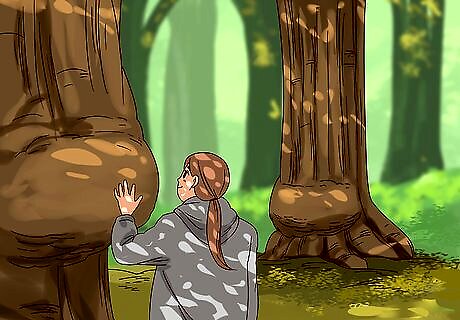
Check nearby trees of the same species for more burls. If, for instance, you find a maple or walnut tree with one or more burls on it, look around for more nearby trees of the same species. It’s possible that a fungus or other disease that’s causing a burl on one tree may be doing the same to others in the area. Any species of tree can develop burls. Generally speaking, though, larger trees are capable of producing larger burls.
Shopping for Burl Wood
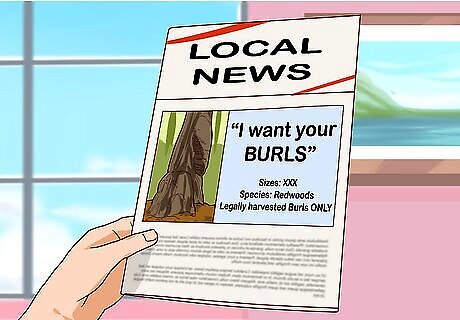
Create a classified ad targeted at people clearing their land. You can simply place an “I want your burls” ad in your local paper or on Craigslist, but it’s better to go into more descriptive detail. Describe any particular sizes or species you’re looking for, and clarify that you want only legally harvested burls. Targeting your ad toward people clearing trees from their own land — to build a new home or an addition, for example — is a good way to ensure that you’re getting legally-harvested burls.
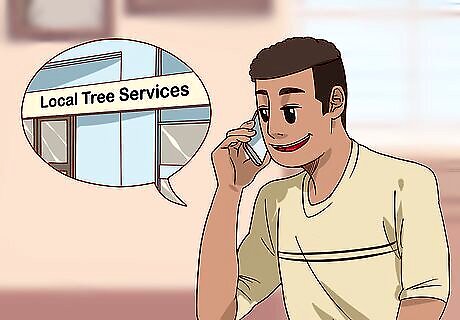
Make arrangements with local tree trimming companies. Your local tree services may simply be chucking the valuable burls into the wood chipper along with the rest of the tree parts they cut down each day. Contact some local tree companies and see if you can make a deal in which they salvage the burls (with the adjacent trunk section) for you. Unless you’re very lucky, they’ll probably expect you to buy the burls from them as part of the deal.

Search online for detailed ads with lots of pictures. You can find websites dedicated to selling burls, or check sites like Craigslist for private sellers. In either case, prioritize ads that provide as much detail as possible about the burl for sale. Make sure you have access to numerous, detailed pictures before making a purchase. Burl prices can vary widely, but expect to pay anywhere from $25 to over $200 USD for smaller to average-sized burls.
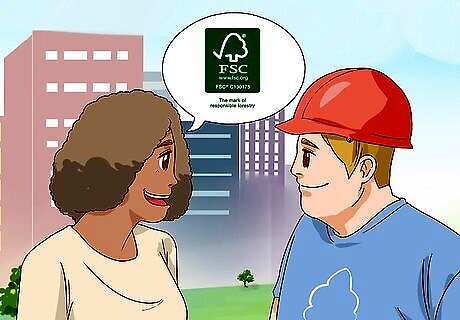
Request proof that the burl was harvested legally. Burl poaching is an unfortunate reality, in that it damages healthy trees and often involves illegally entering and taking from someone else’s property. Ask if the seller can provide some sort of legitimate certificate of authenticity before you buy a burl. In the U.S. you can trust that wood products (including burls) certified by the Forest Stewardship Council (FSC) have been harvested properly. Burls for sale that don’t have any attached trunk are more likely to have been poached, since they can be quickly sliced off of a live tree.

Get written documentation before transporting burls yourself. If you’re picking up burls from a local seller or have harvested them (with permission) from someone’s property, don’t just throw them into the back of your truck. Especially in areas where burl poaching is illegal yet rampant (such as the U.S. Pacific Northwest), you might be pulled over and questioned by the police. Get a note from the seller/property owner with their name, address, and phone/email, the current date, and a quick description of the transaction.
Harvesting Burls Properly
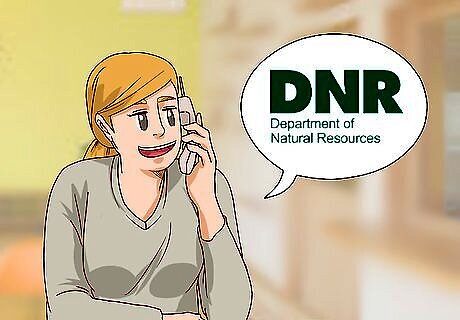
Make sure you have explicit permission to harvest burls. The safest place to remove burls is from your own trees on your own property. It may be illegal to harvest burls from public lands, even from dead or fallen trees, and it definitely is illegal to take any part of a tree from someone else’s property without permission. Contact your area’s forestry service, department of natural resources, or similar government agency for details on harvesting burls on public lands.
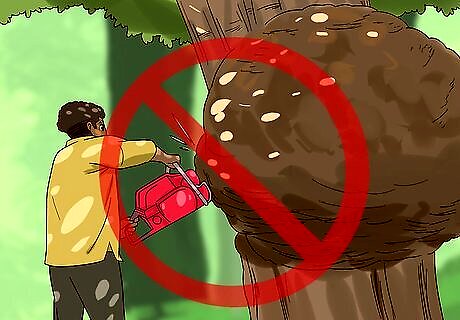
Don’t cut burls from healthy trees. Burls protect damaged areas of trees, so chopping them off causes additional damage and exposes the tree to disease infiltration. Also, a burl’s most beautiful (and valuable) wood grain is usually found deep within the tree’s trunk, so you’ll be leaving behind the burl’s best part if you simply slice it off the trunk. Harvest burls from fallen trees, or standing trees that need to be removed anyway. Burl wounds will usually heal, so you might possibly consider cutting “burl boards” (several thick slices of a larger burl to use in woodworking) from a healthy tree. But it’s still best to avoid cutting burls from healthy trees.
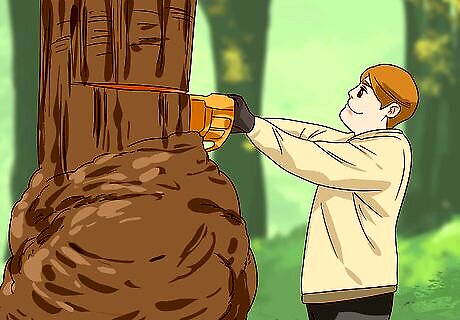
Harvest the adjoining trunk along with the burl. Instead of just cutting the bulbous, visible burl off and leaving the “good stuff” behind in the trunk, cut at least 5 inches (13 cm) of trunk section both above and below the burl. If the burl and trunk section is too large or heavy to transport, cut the trunk section in half vertically after removing the whole section.
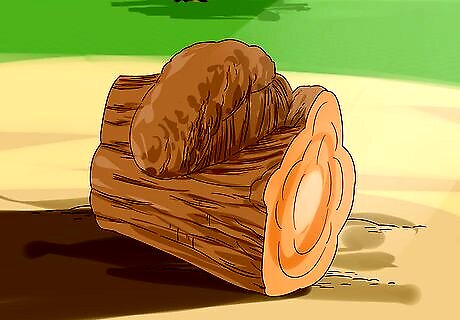
Let burls dry thoroughly before working with them. For whole burls, it's best to leave them attached to the trunk section to dry. Dry them outdoors, off the ground and sheltered from rain and direct sunlight. Large burls can take 6 months or more to dry sufficiently for woodworking. If you've cut "burl boards" or just a section of a burl, coat the cut ends with a woodworking end grain sealer and allow the pieces to dry for 12 weeks or more.














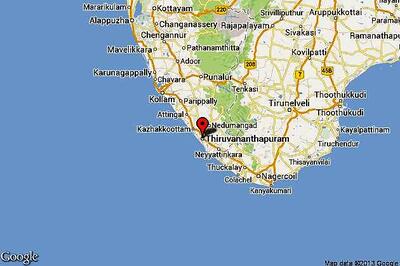





Comments
0 comment